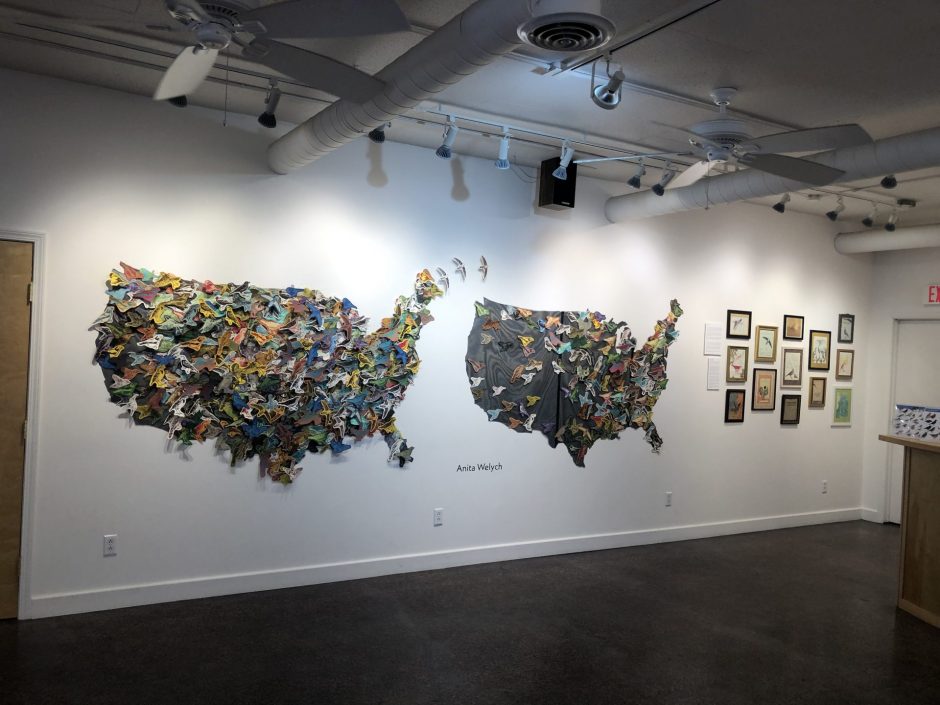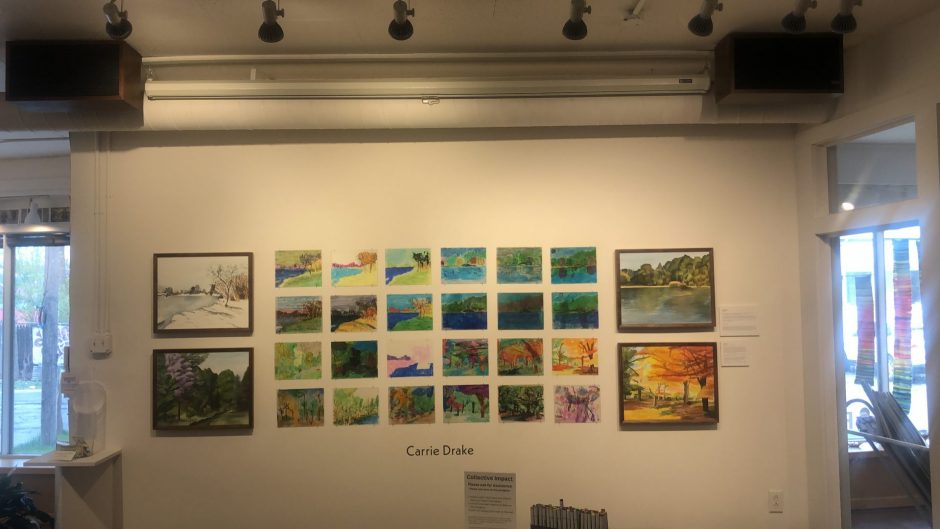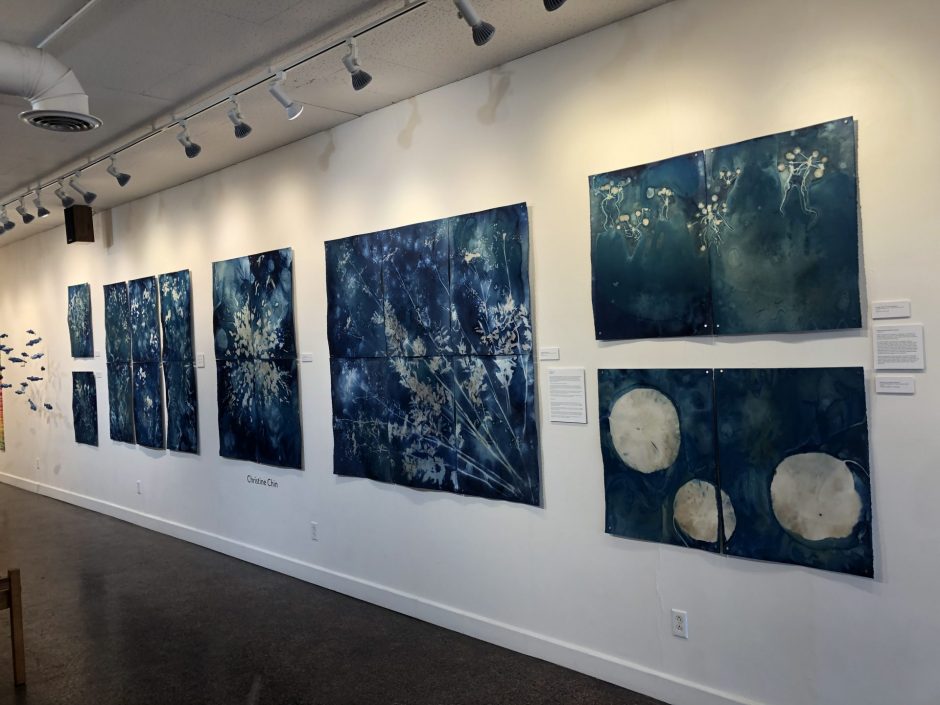Despite fewer people traveling during the pandemic, levels of carbon dioxide and methane continued to increase in 2020. This spike has accelerated the rise of sea levels and increased droughts, among other negative environmental impacts.
At ArtRage Gallery, the current exhibition, “Climate Connections: Our Shared Future,” hopes to inspire and empower the community despite these detrimental impacts.
“Issues around climate change can feel incredibly depressing and disempowering. I hope that people feel empowered or inspired,” ArtRage community engagement organizer Kim McCoy said.
The exhibition is a three-part collection from Anita Welych, Christine Chin, and Carrie Drake. All three artists used the scientific and communal impact of climate change as a driving factor for their various installations.
Welych’s “Dwindle” is inspired by the gradual reduction of bird populations all over America. This installation uses scientific metadata from 50-55 years ago and 2016-2019 to show how some populations have decreased. Welych’s exhibit is accompanied by a series of collages of a bird and the percentage lost over 50 years. She hopes her exhibition shows people that the dwindling of birds is a problem that affects us all and how we can help.
“I want you to feel kind of some love for them. And then I want you to think we have a problem. And I can do something about this, and that’s what I hope people leave with,” Welych said. “Therefore, birds are like the messengers for our whole environment. They’re telling us something in their absence. And so, we need to protect our environment in many ways, and not just to protect birds, to protect all living things, including ourselves.”

Carrie Drake, a teacher at the Montessori School of Syracuse, uses community and the impact of climate change on future generations as a driving force of her installations. Drake’s exhibition includes an interactive component, “Shared Impact,” that allows participants and viewers to reflect on the climate crisis. Participants are invited to color one of four Syracuse Parks – Barry Park, Elmwood Park, Onondaga Park, or Thornden Park – on plexiglass.
“So there are artworks that are put on the wall, and they are overlaid and juxtaposed together, and so their drawing or artwork of a park starts to disappear or stand out a little more based on what someone else has done,” Drake said.

Drake also brought together a group of community knitters and Montessori School students as part of the “Tempestry Project.” The knitters used data of their birth year from a specific location to show the generational differences in the weather changes.
Participants are still able to be a part of the installation through the “Emotional Tempestry,” where visitors are able to choose a color that represents their feeling about the statement “What we had is not what we will leave behind.”

The third part of the exhibition is Christine Chin’s “Concerning Climate.” It consists of a variety of installations.
- Dust Storm Animations- Stop motion animation of sand on a hand-drawn map inspired by satellite imagery of the movement of dust carried by weather patterns over continents and oceans.
- Stuffed Storms- Uses NOAA data to show a visual record of storm data from the Atlantic Tropical Storm Season
- The Round Goby- Cyanotypes coated fabric from drawing of different specimens of the goby, which is expected to decline in the native fish species.
- Invasive and Native Species Cyanotypes were mainly collected in CNY.
The exhibition is open at ArtRage gallery until May 20.




